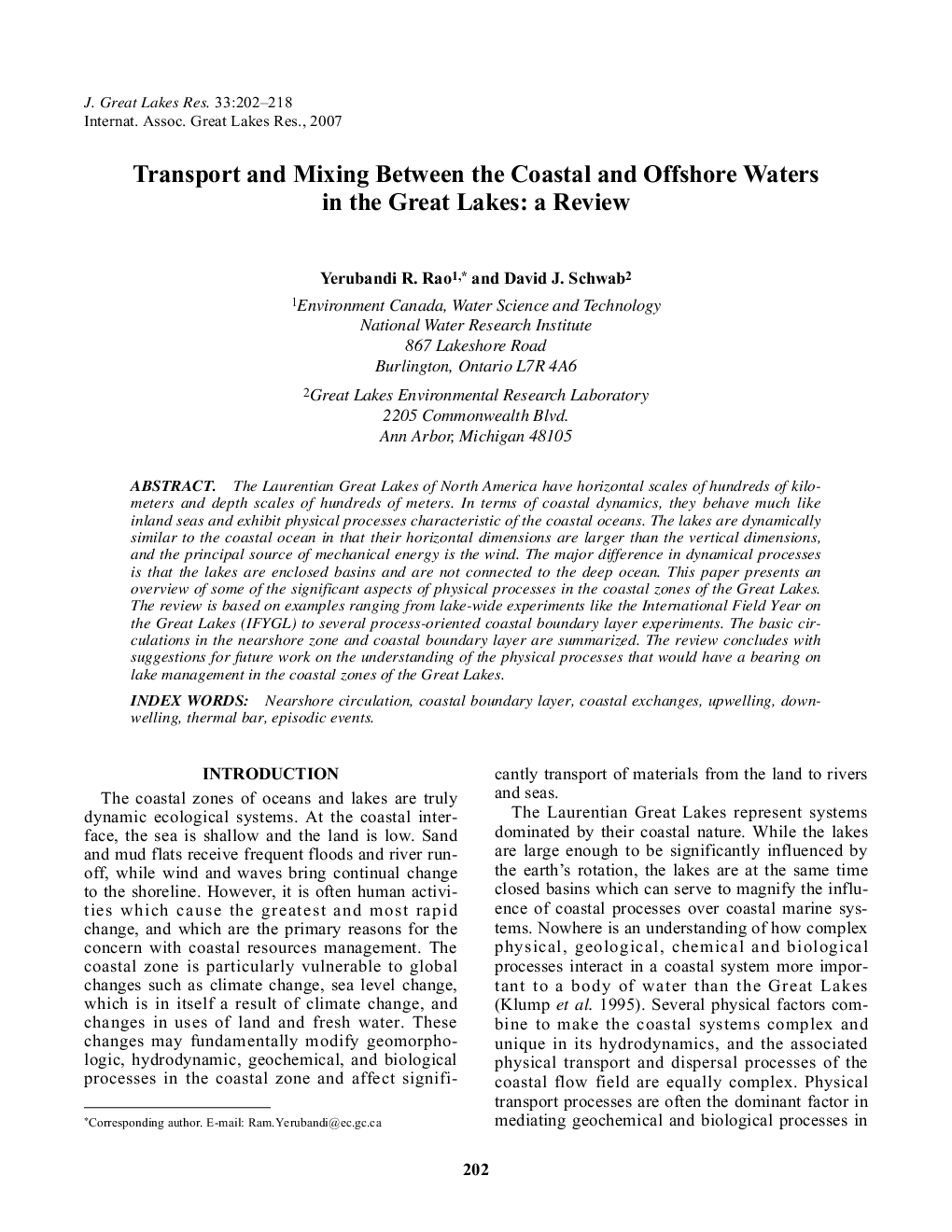| Article ID | Journal | Published Year | Pages | File Type |
|---|---|---|---|---|
| 4399343 | Journal of Great Lakes Research | 2007 | 17 Pages |
Abstract
The Laurentian Great Lakes of North America have horizontal scales of hundreds of kilometers and depth scales of hundreds of meters. In terms of coastal dynamics, they behave much like inland seas and exhibit physical processes characteristic of the coastal oceans. The lakes are dynamically similar to the coastal ocean in that their horizontal dimensions are larger than the vertical dimensions, and the principal source of mechanical energy is the wind. The major difference in dynamical processes is that the lakes are enclosed basins and are not connected to the deep ocean. This paper presents an overview of some of the significant aspects of physical processes in the coastal zones of the Great Lakes. The review is based on examples ranging from lake-wide experiments like the International Field Year on the Great Lakes (IFYGL) to several process-oriented coastal boundary layer experiments. The basic circulations in the nearshore zone and coastal boundary layer are summarized. The review concludes with suggestions for future work on the understanding of the physical processes that would have a bearing on lake management in the coastal zones of the Great Lakes.
Related Topics
Physical Sciences and Engineering
Earth and Planetary Sciences
Earth and Planetary Sciences (General)
Authors
Yerubandi R. Rao, David J. Schwab,
